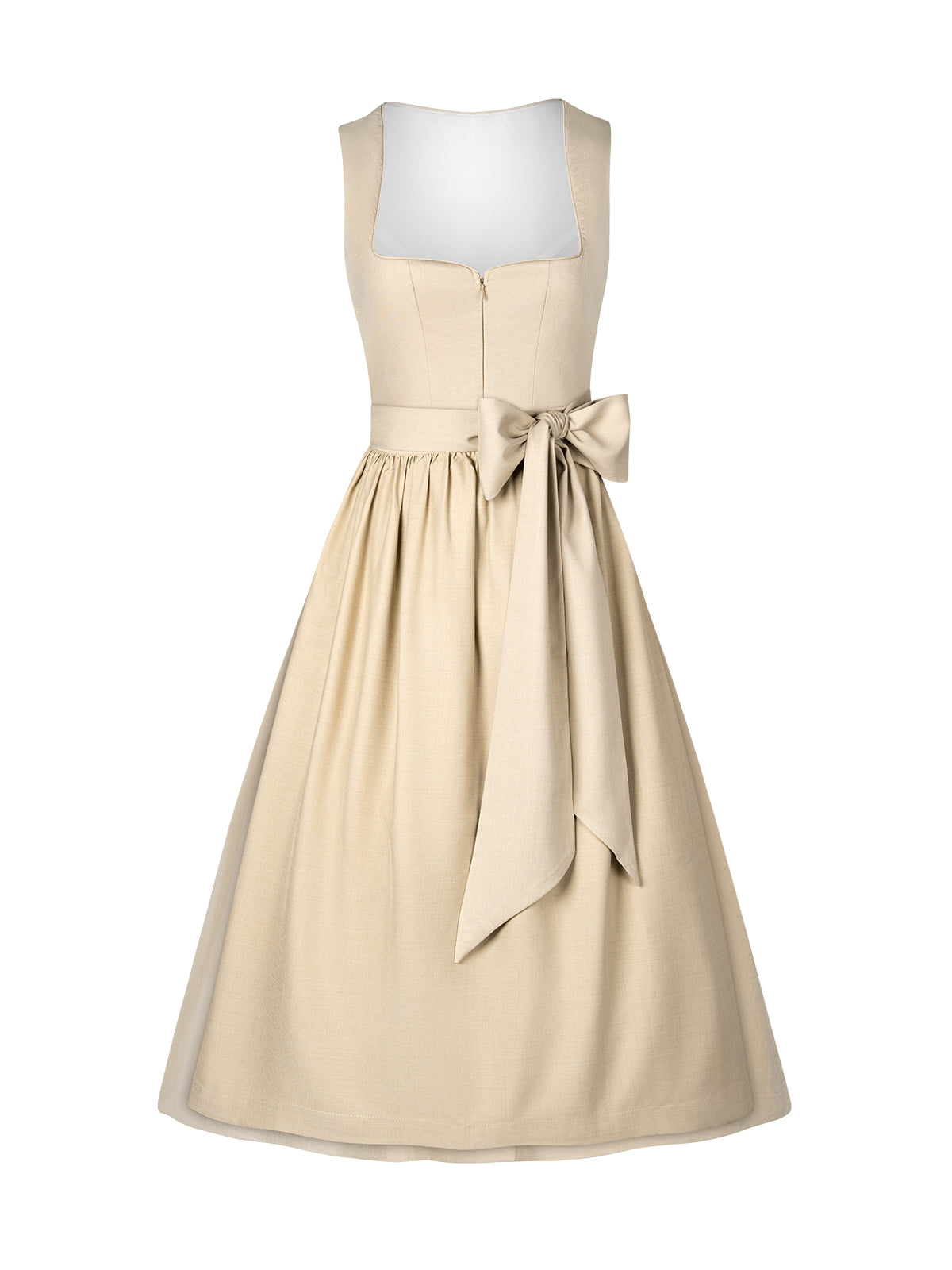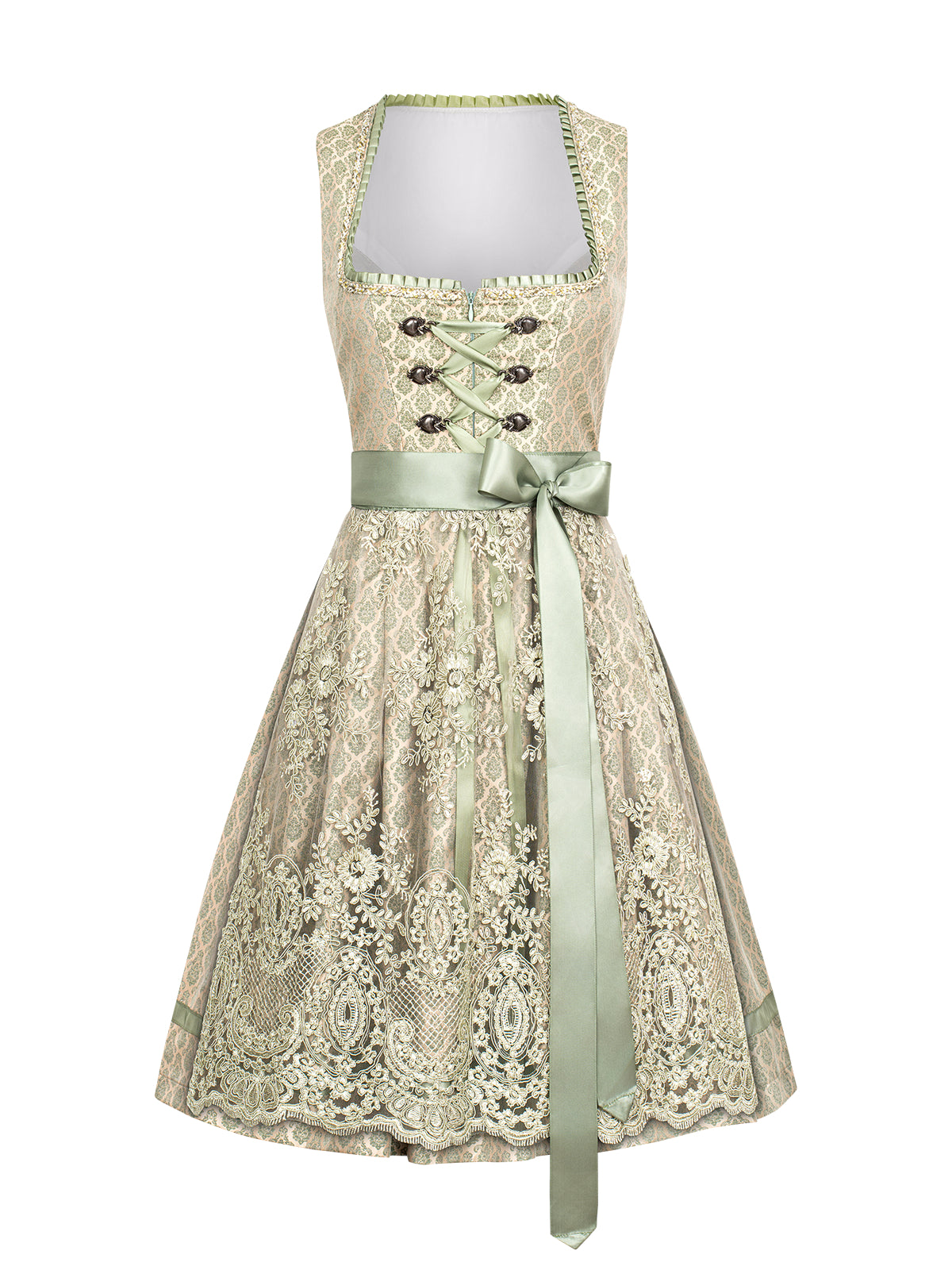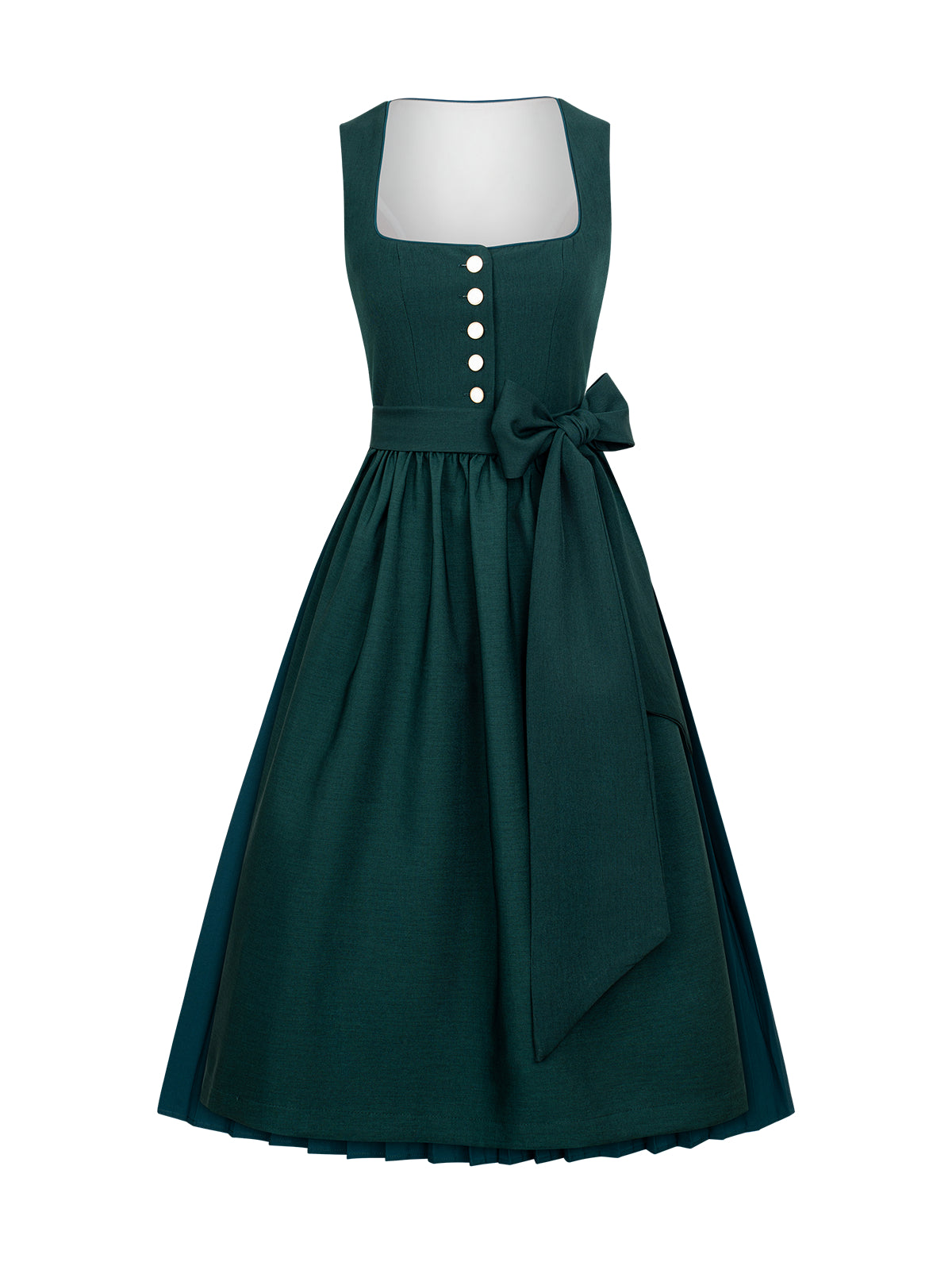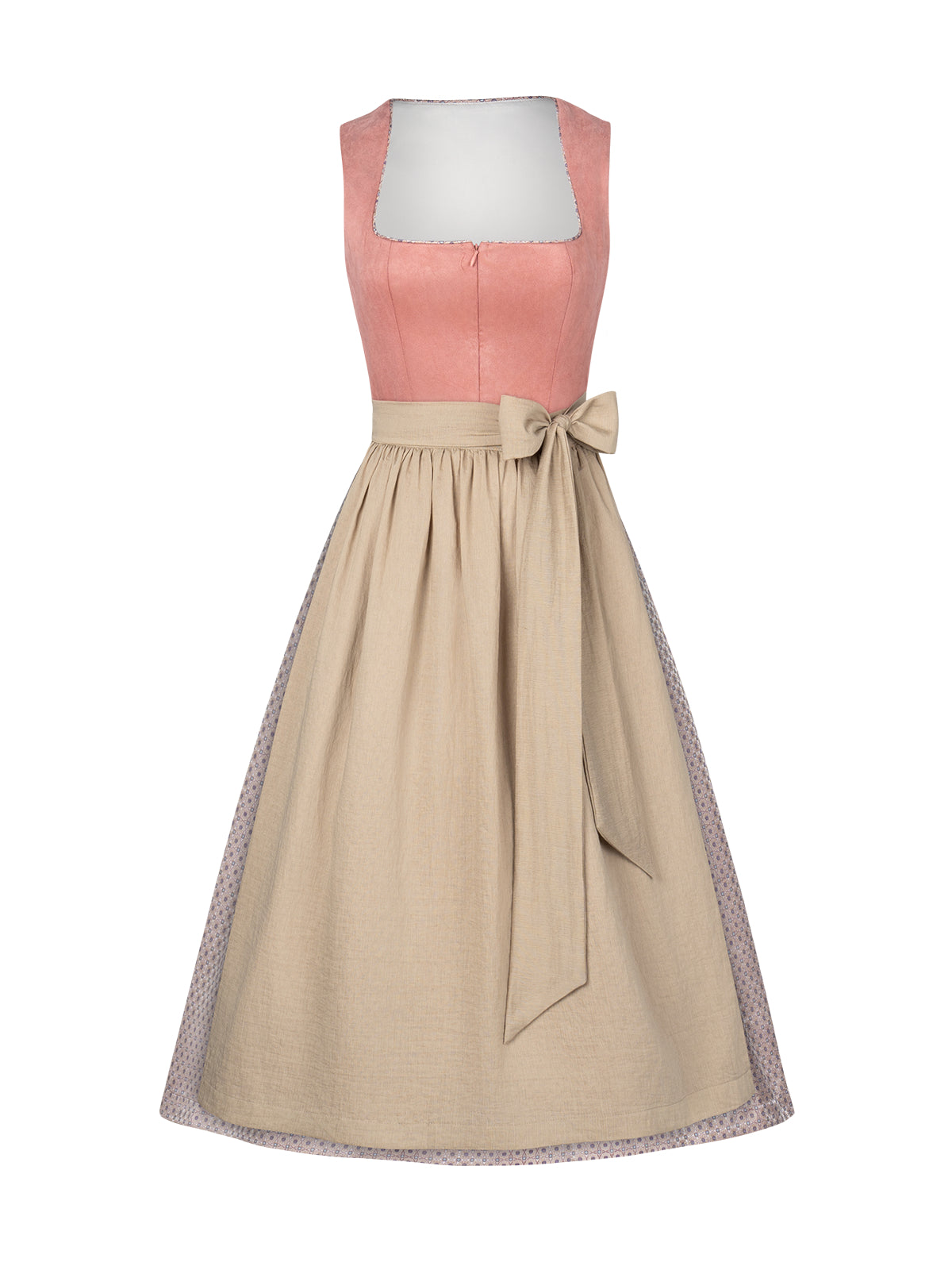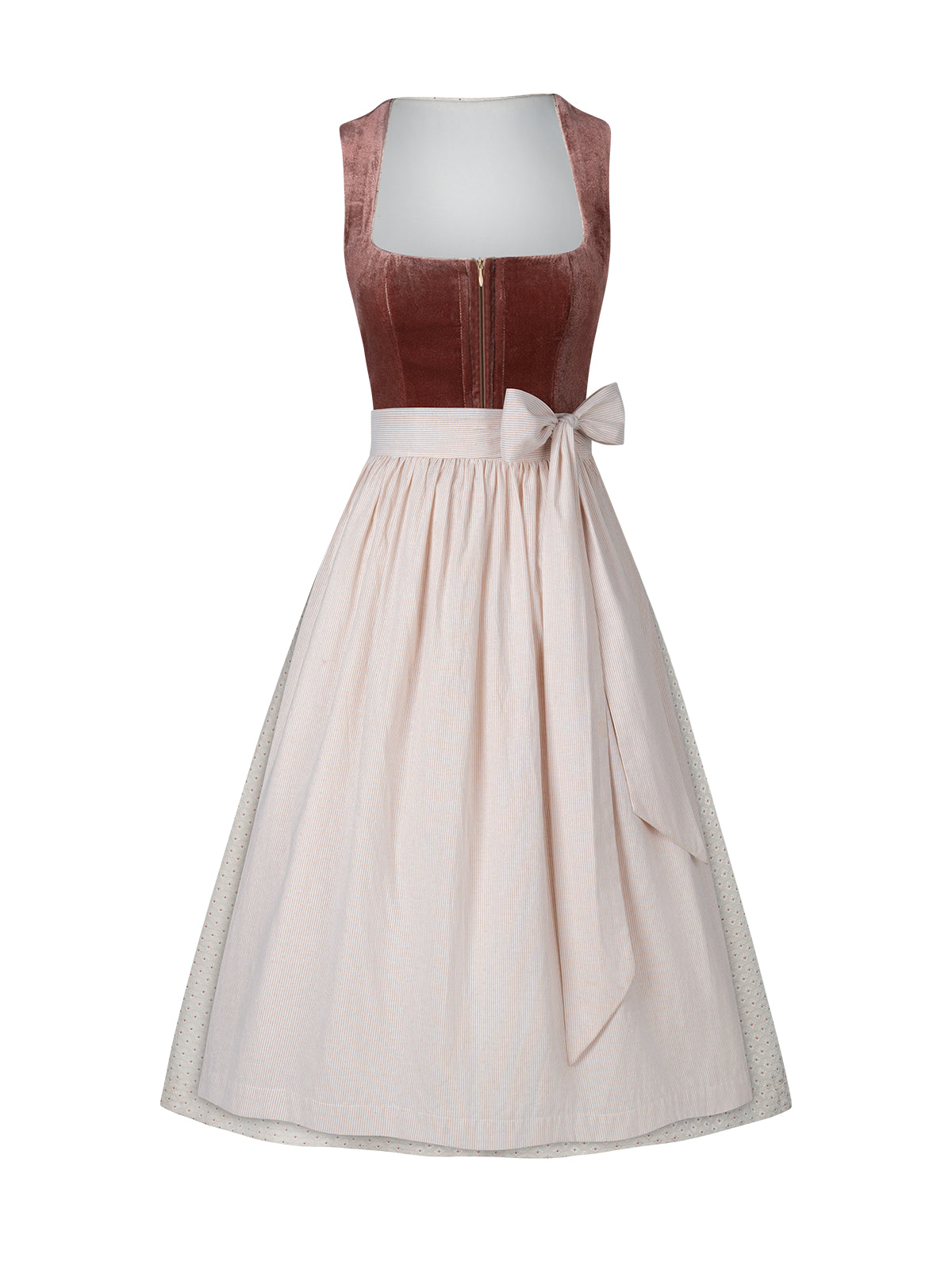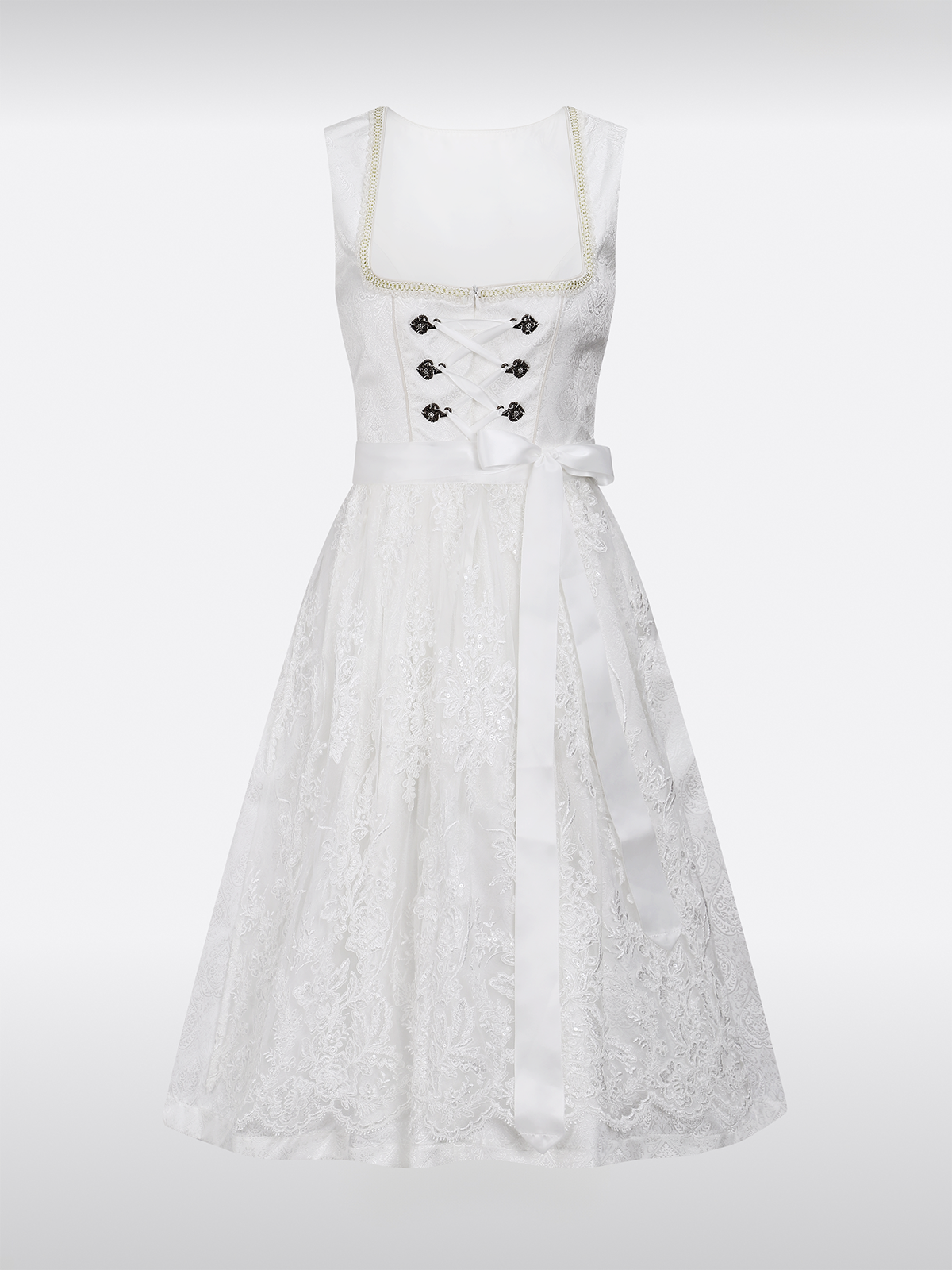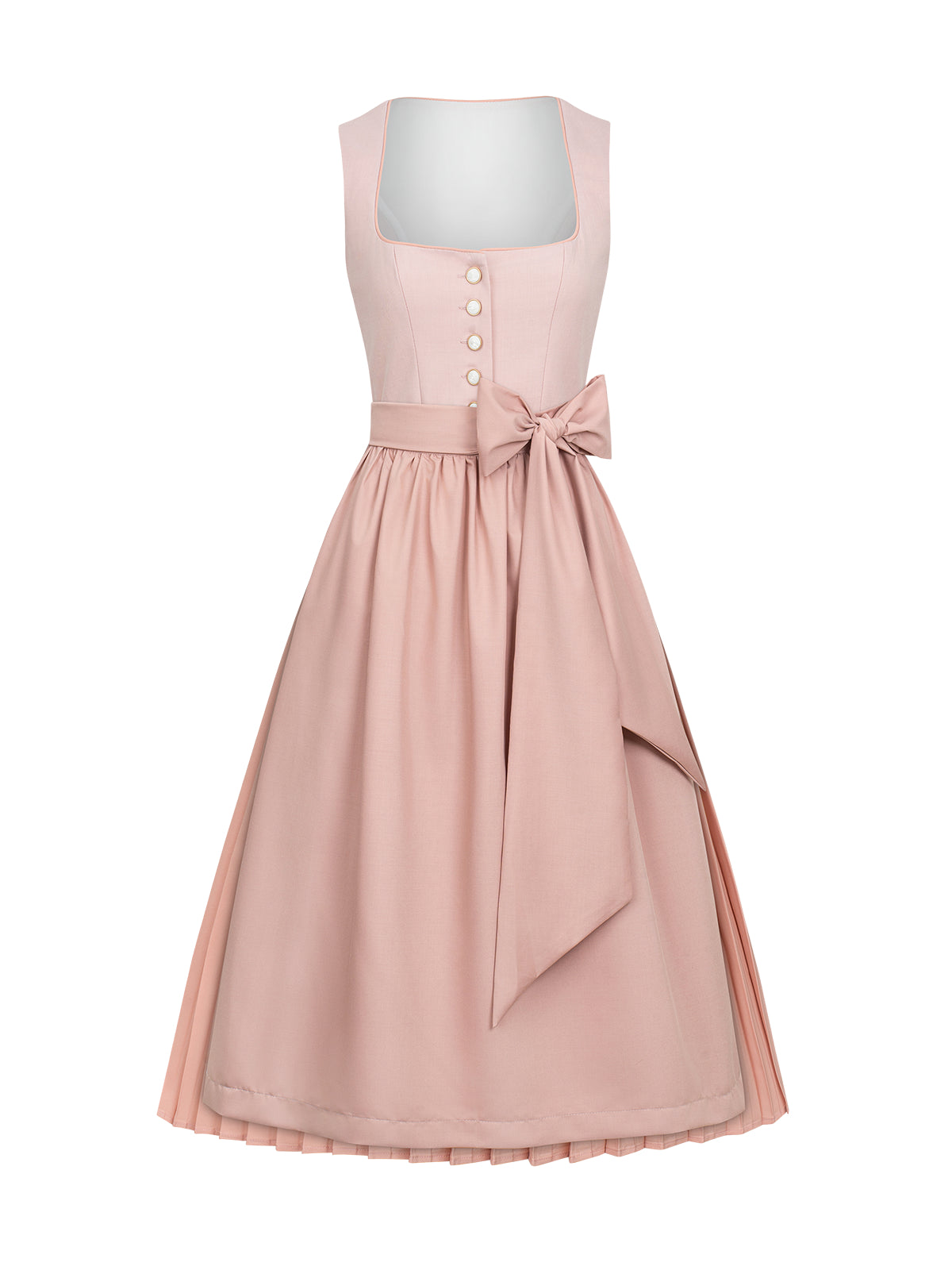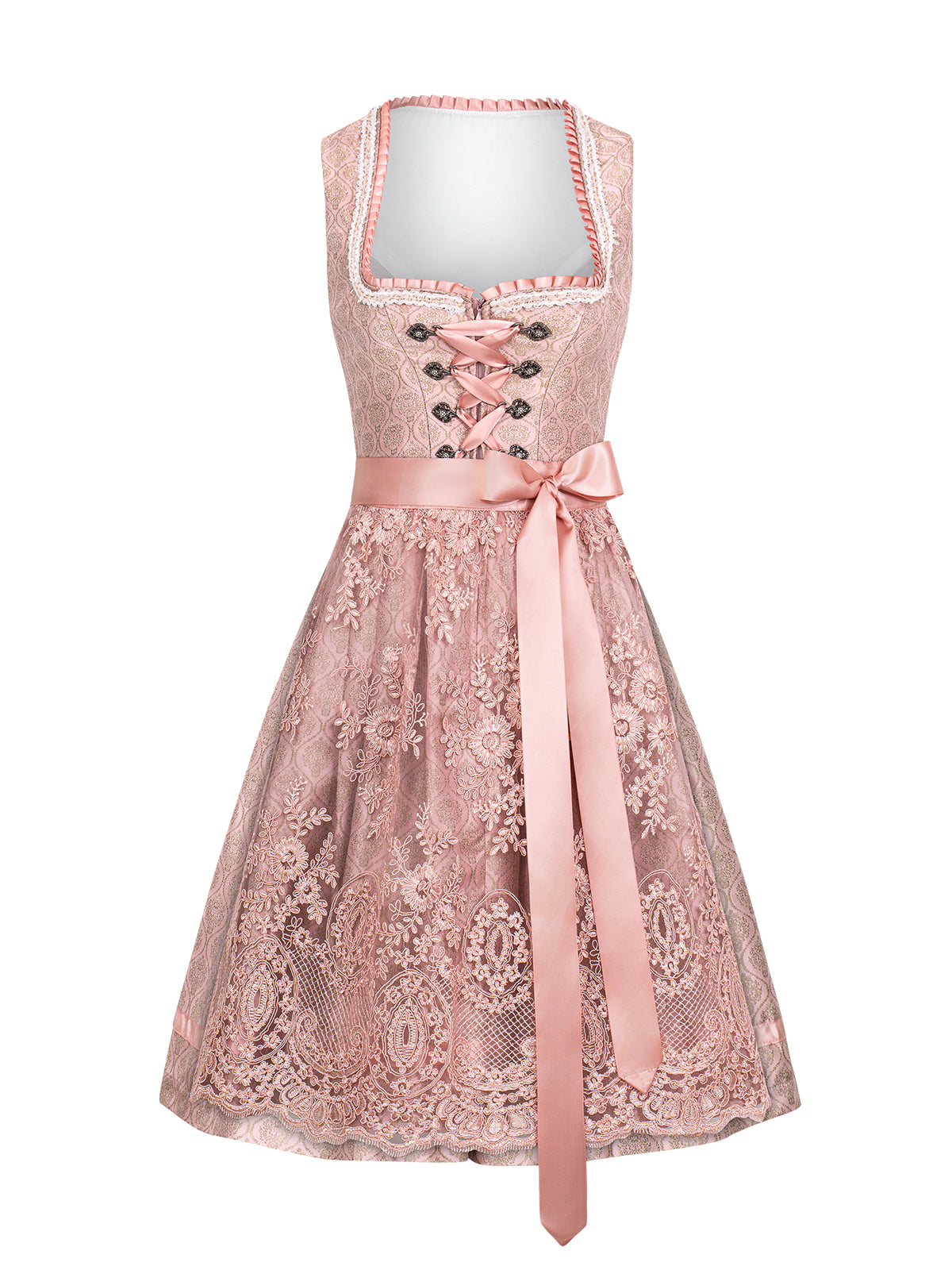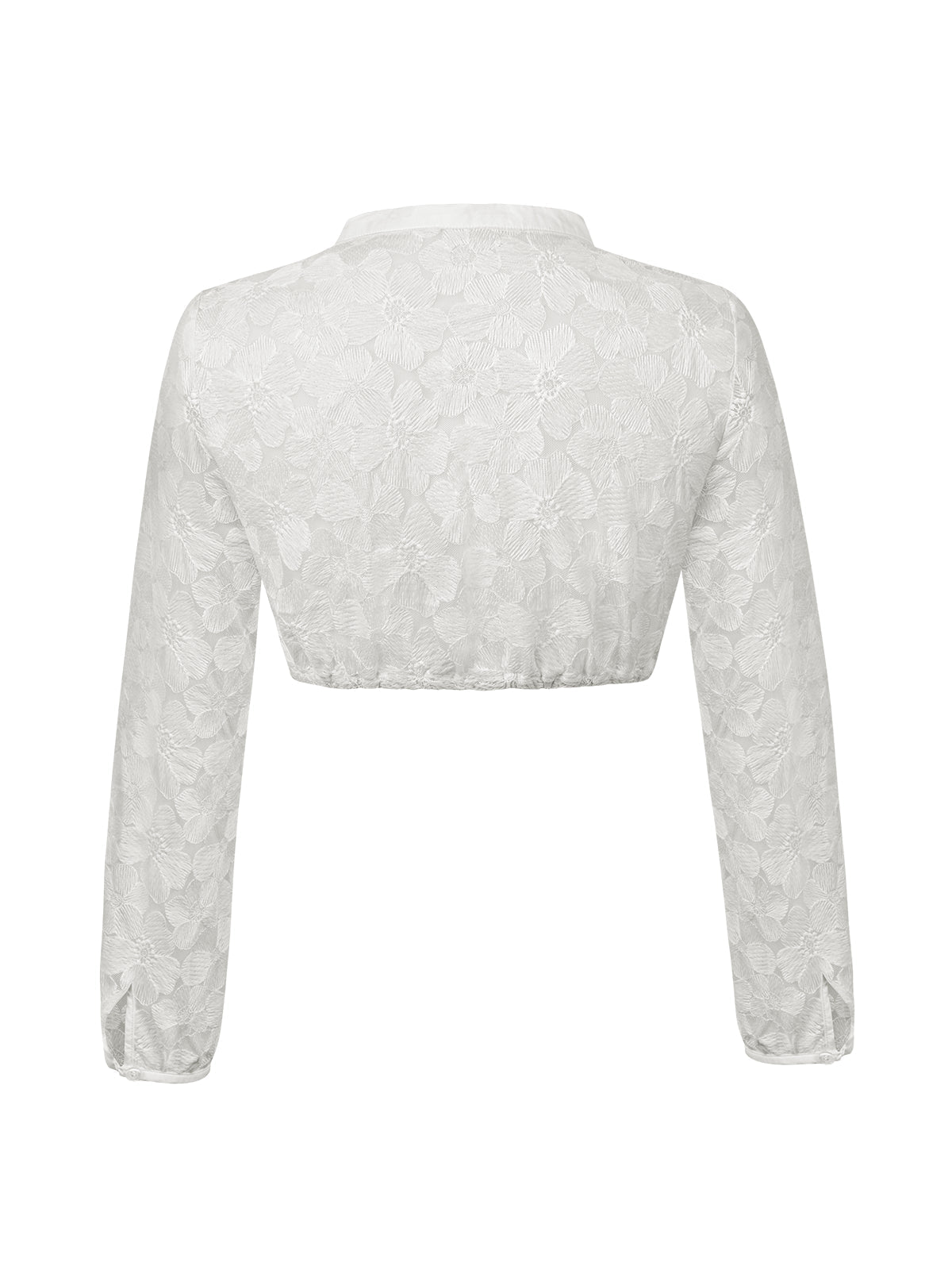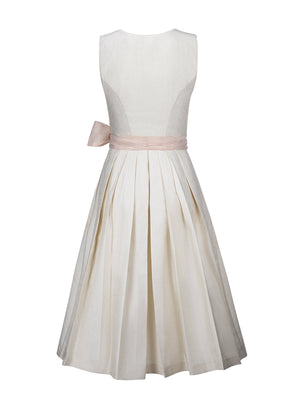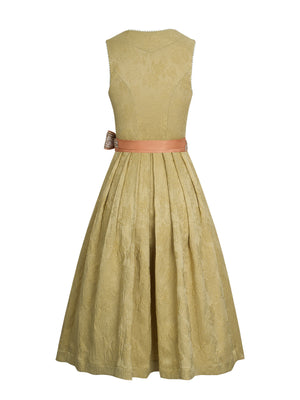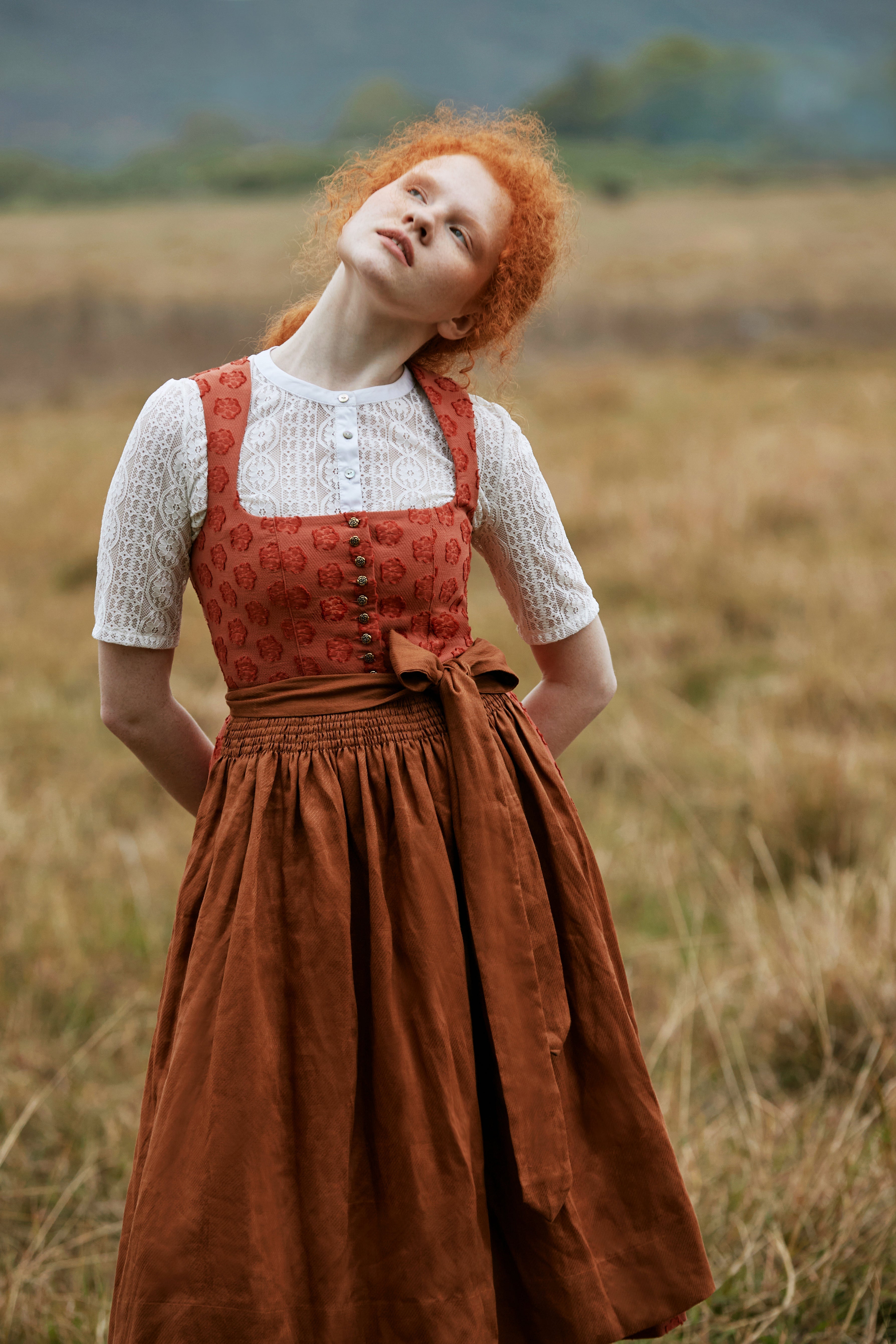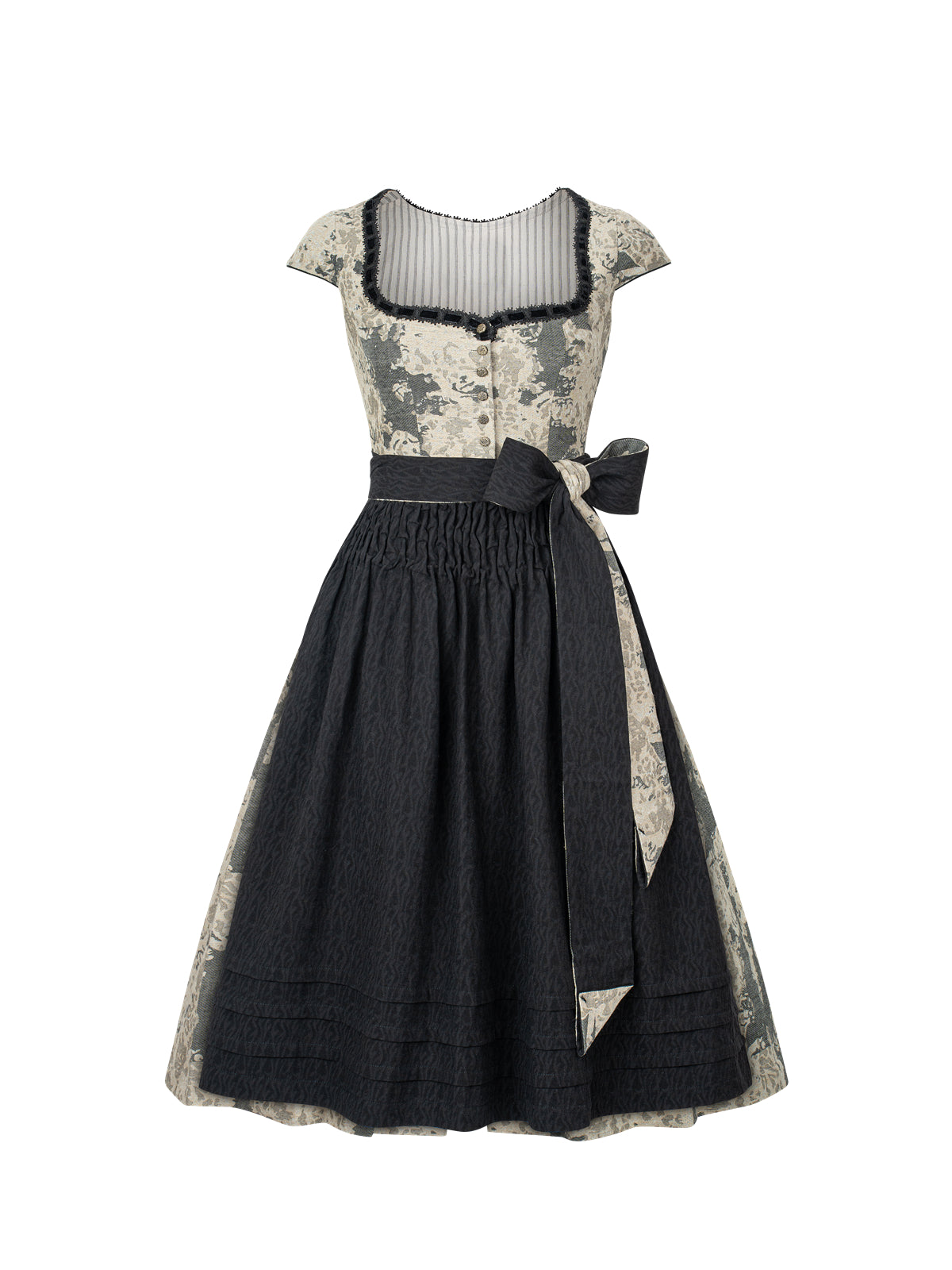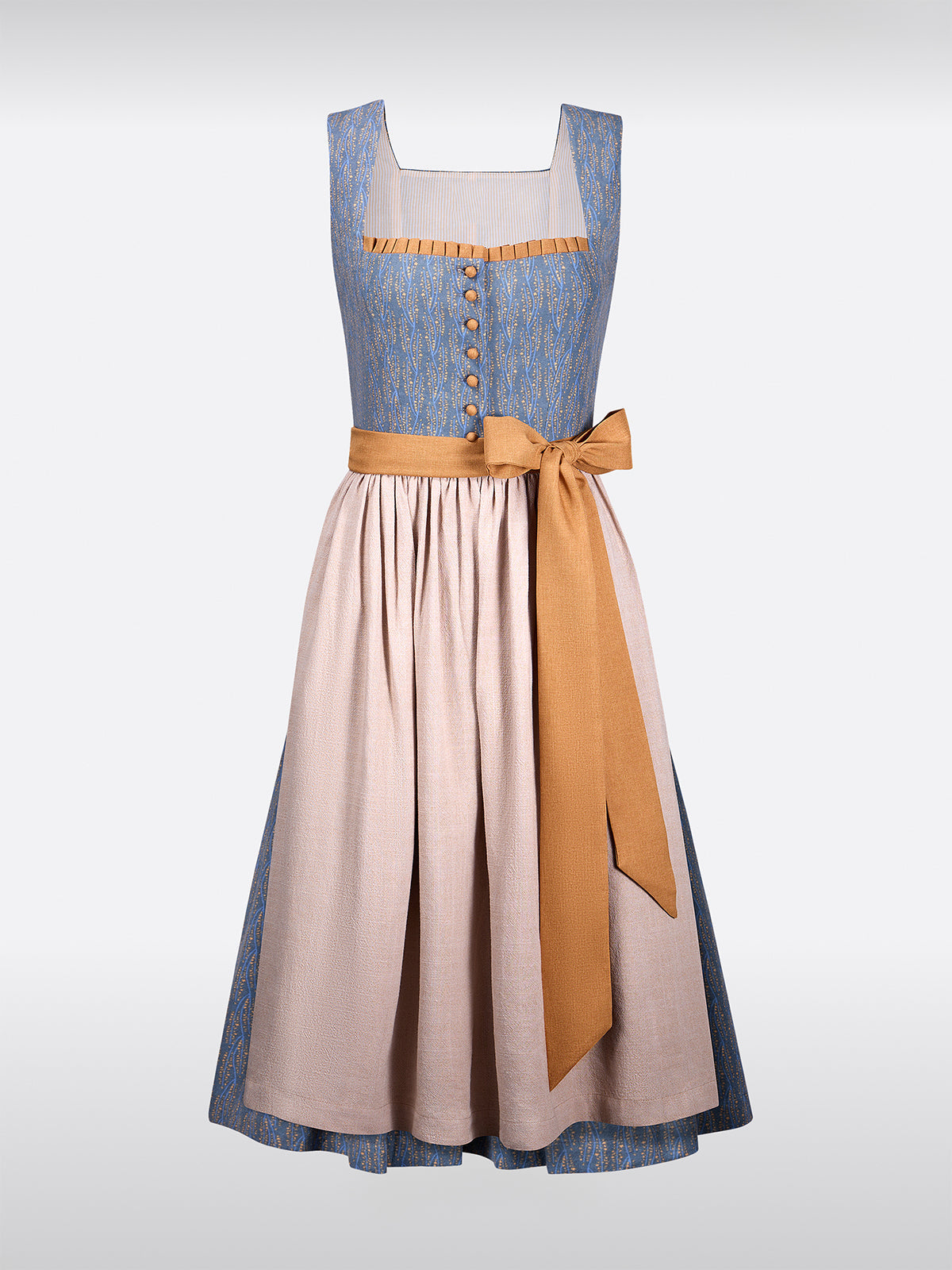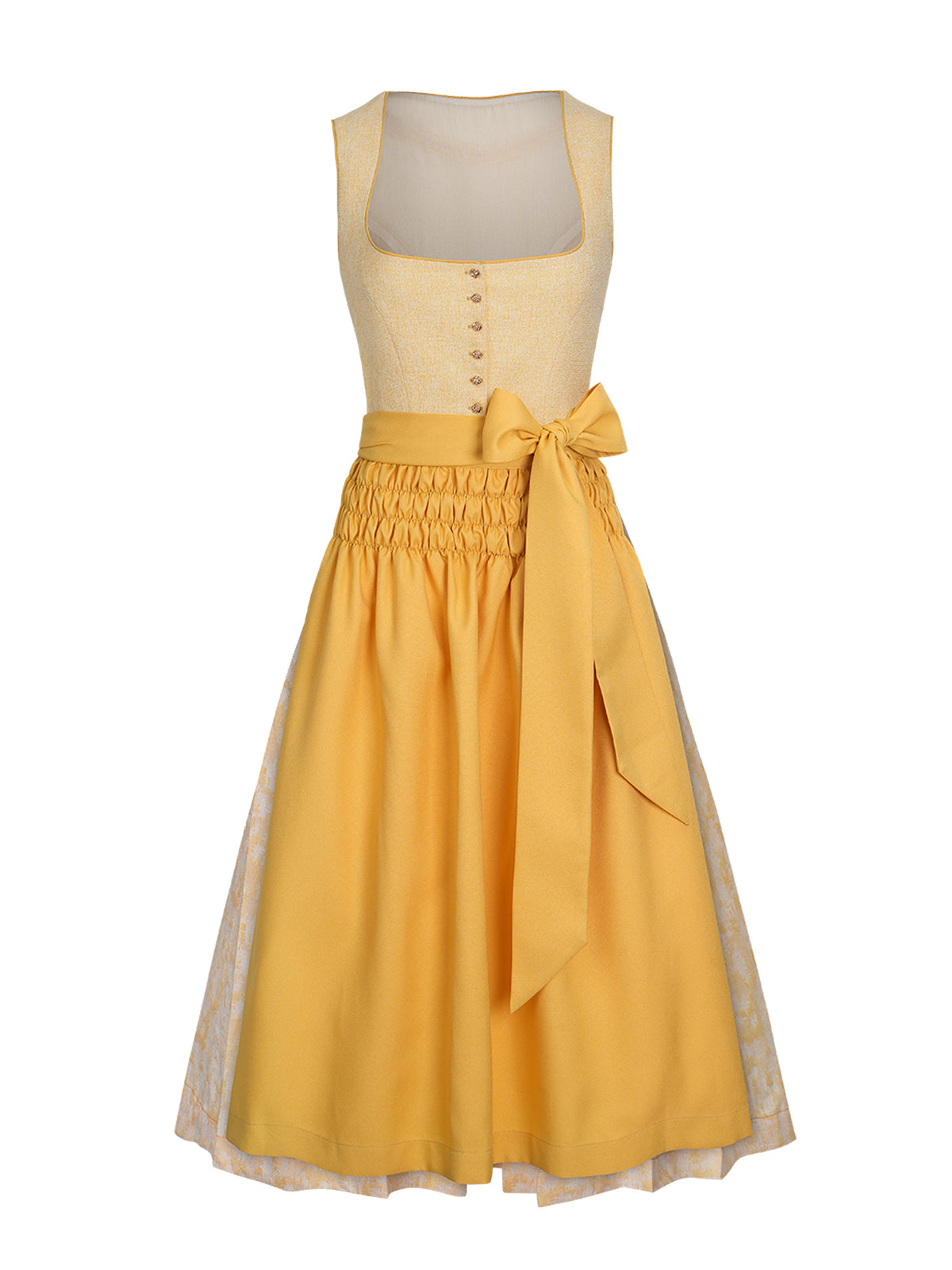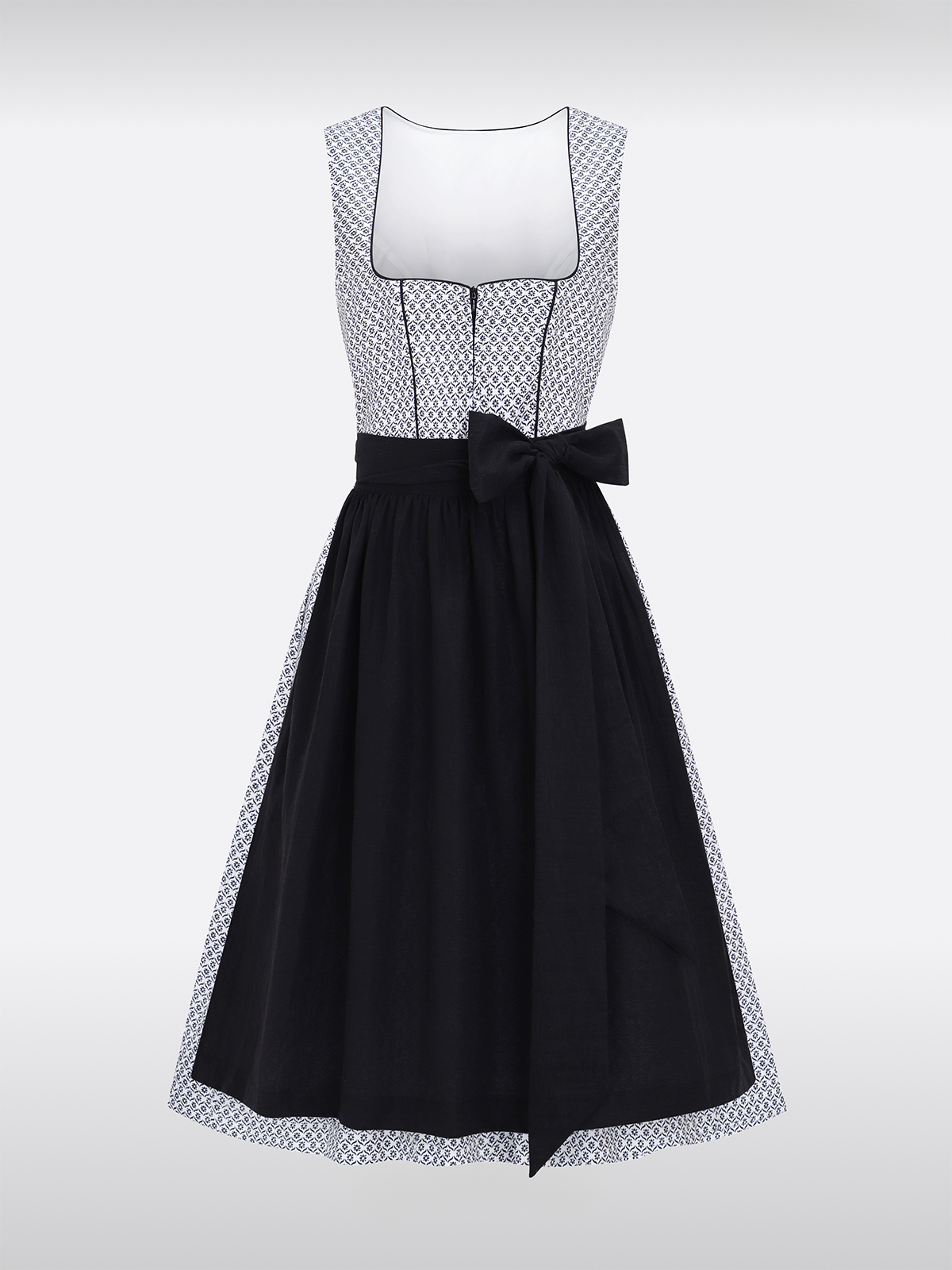1. The white dirndl blouse: A symbol of Bavarian craftsmanship
The Dirndl blouse long-sleeved white is the stylistic DNA of Bavarian traditional costume. Its origins lie in the rural 19th century, when it served as a work blouse for girls and women. The white linen symbolized purity and modesty, while the intricate lace on the collar and sleeves celebrated craftsmanship at the highest level. Today, it is often combined with modern materials such as cotton or silk, but the iconic elements remain: the high stand-up collar, the sophisticated button plackets, and the delicate lace trims.
Why the white blouse is indispensable:
- Timelessness: It goes well with a traditional dirndl dress as well as with jeans or skirts.
- Diversity: The look can be individualized with details such as ruffles, flounces or embroidery.
- Cultural appreciation: It honors the craftsmanship and history of Bavaria.
But not only the blouse itself, but also the white dirndl dress The Bavarian costume as a whole is experiencing a renaissance. Once considered a simple garment for servants, it became an icon of Oktoberfest in the 20th century. Today, it is made in countless variations—from minimalist cuts to opulent designs with gold embroidery.
2. Oktoberfest outfits without dirndls: dare to change things up
While the dirndl is an unmistakable part of the Wiesn flair, the demand for Oktoberfest outfits without dirndls. Why? The reasons are varied:
- Individuality: Many women do not want to force themselves into the traditional role, but rather emphasize their personal style.
- Comfort: A dirndl can be restrictive during long festive days. Loose blouses, trousers, or dresses offer more freedom of movement.
- Sustainability: Alternatives to the dirndl are easier to integrate into everyday life and thus avoid “one-size-fits-all styling”.
Inspiring looks for a modern Oktoberfest experience:
- Boho chic: Combine a white dirndl blouse with wide-legged, patterned trousers and leather boots. Casual fringe bags or a feathered hat add accents.
- Retro vibe: A high-necked top with puff sleeves and a tight, midi-length pencil skirt in light blue or pink evokes the charm of the 50s.
- Elegantly simple: A white blouse with lace sleeves, dark culottes, and a delicate necklace for a look that combines tradition with understatement.
3. The white dirndl blouse as an all-round talent
The Dirndl blouse long-sleeved white It's not just a festive outfit, but a versatile staple for fall. Paired with dark jeans and ankle boots, it creates an everyday look that combines warmth and elegance. For cooler evenings, a long wool skirt in gray or brown gently frames the blouse.
Styling tips for every occasion:
- Office-suitable: Worn with black trousers and a blazer, the blouse looks serious yet feminine.
- Evening events: With slim, shiny trousers and high heels, the look becomes an eye-catcher.
- Layering: Worn under a knit dress or corduroy jacket, the blouse adds a touch of nostalgia.
4. Sustainability and Innovation: The Future of Dirndl Fashion
The tradition of the dirndl does not contradict modernity. On the contrary: more and more designers are focusing on sustainable materials such as organic cotton or recycled fabrics.Also the white dirndl blouse undergoes a green transformation:
- Upcycling: Old blouses are spruced up with new lace trims or embroidery.
- Regional production: Short transport routes and fair working conditions are becoming increasingly important.
- Digital adaptation: Online configurators make it possible to design blouses and dirndl dresses to measure – without mass production.
Another trend is the Gender neutrality. Dirndls for men, so-called "lederhosen for all," and unisex blouses break with old gender stereotypes and open up traditional costume culture to new target groups.
5. The hidden messages of the white blouse
Beyond its aesthetic value, the white dirndl blouse It has a deeper meaning. It speaks of a connection to nature – linen and cotton are plant-based materials that convey breathability and lightness. The elaborate handcrafting reflects respect for the creative process.
But the blouse also has a subtle feminismBy taking up traditional beauty ideals but at the same time modernizing them, she defines women not by their dress but by their personal expression.

